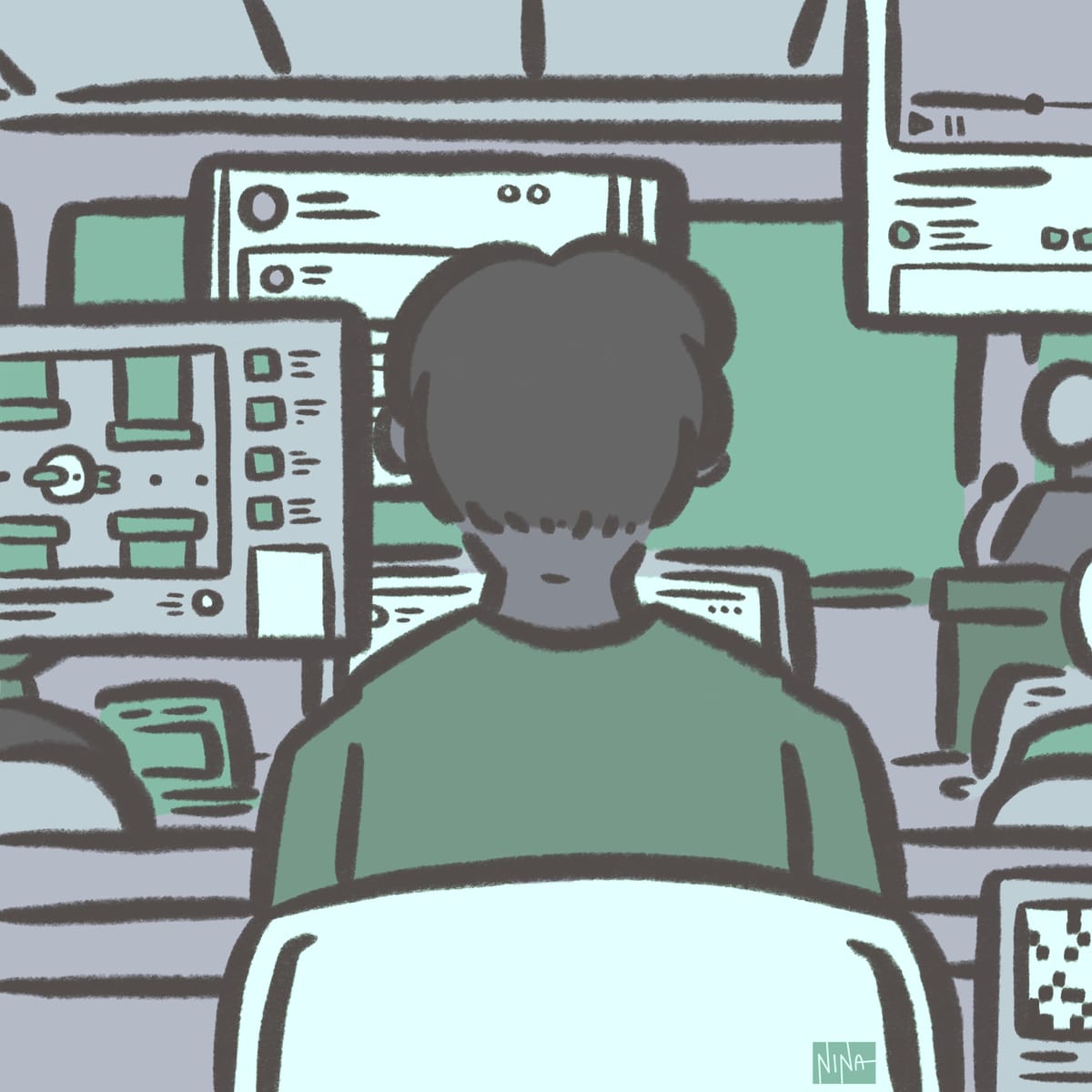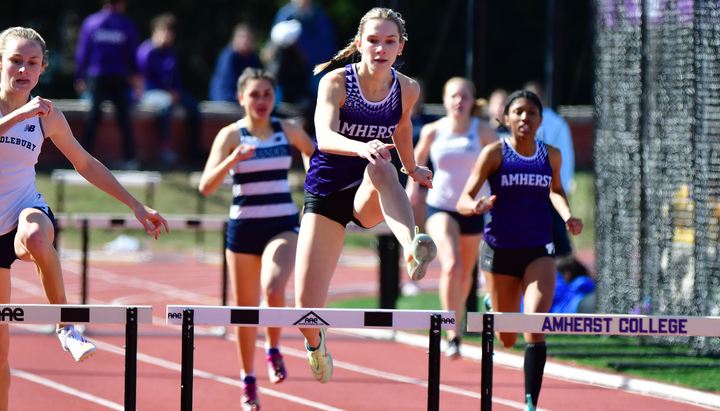We Have a Problem With Paying Attention
Managing Podcast Editor Andrew Rosin ’25 uses the ongoing World Cup games as an entry point to interrogate students’ difficulties with paying attention in class.

“These couple of weeks are a little bit different because of the World Cup. I’ve been watching soccer games in every single one of my classes,” one student told me last week. This student is evidently not alone: In one of my classes last Wednesday, which overlapped with the Mexico versus Saudi Arabia and the Argentina versus Poland games, I observed at least six students dutifully tuned-in to the World Cup broadcast. But while we might be tempted to write off the weeks of the World Cup as an anomaly, this past week has exposed issues with in-class distractions that have plagued Amherst students since long before the tournament began.
Throughout the semester, I have informally studied the various activities my classmates engage in when they are not paying attention. I have observed two students, on multiple occasions, spend entire class periods browsing financial analyst internship opportunities on Handshake. I have caught students watching professional volleyball, feature length films, and Super Smash Bros gameplay. I have noticed students playing Wordle, shopping for new bathing suits, and writing essays for different classes. And, of course, I have seen students spend countless hours over the course of the semester checking their emails or responding to texts.
While the things that students do in class might be surprising, the fact that so many students struggle to pay attention in class is not. A 2010 study by Wharton Senior Fellow Matt Killingsworth and Harvard Professor Daniel Gilbert found that “stimulus-independent thought or mind wandering appears to be the brain’s default mode of operation.” In fact, Killingsworth and Gilbert concluded that humans spend about 47% of the time thinking about something unrelated to what they are currently doing. This propensity for mind wandering is independent of the activity in which an individual is engaged — whether that be watching a movie or attending a lecture.
With that said, there are certain factors that make it easier or harder for students to pay attention in class. The most obvious example is the length of the class. In recent years, young people who regularly use social media sites like Instagram and TikTok have grown used to the rapid dopamine hits that these platforms deliver. Combined with the long stretch of online classes during the Coronavirus pandemic, when one student told me he would spend class “playing video games and watching YouTube,” it is near-impossible to pay attention during the entirety of an 80 minute — or even 50 minute — class.
While it is unlikely that the administration would ever shorten classes, there are strategies that professors can employ to make long classes more bearable. Certain professors, for example, give their classes a short break halfway through their lecture. And while the correlation could be entirely spurious, it appears that students in my class with a three minute break spend much less time on their phones than students in my classes without breaks. In support of this conclusion, psychologist Gemma Briggs argues that “we’ve got a wealth of information in our heads about what normally happens in given situations, what we can expect. And those expectations and our experiences directly mold what we see and how we process information in any given time." So, the expectation of a break after 40 minutes would lead students to more actively pay attention in the time preceding and following the break. For professors interested in improving participation and engagement in their classes, a short mid-lecture break is a simple, low-cost tool.
When I asked Fran Torres ’26 about the cases in which he finds it most difficult to pay attention in class, he told me that “it depends on the style of lecture” and that “when the class size is bigger, there’s not as much one-on-one talking, so your attention can start to slip.” This observation — that students’ attention spans are mediated by the professor’s style of lecture and the size of the class — yields some possible solutions. First, you could find professors whose lecture style requires students to be actively engaged, such as those who cold call students or who integrate activities and small group discussions into their lectures. Second, you could register for smaller classes in which, as Torres told me, “Not paying attention isn’t an option.”
There are some obvious flaws with the aforementioned suggestions, namely that you cannot always control for your professor’s lecture style nor is it feasible to only take small classes throughout your Amherst career. Does this mean that students have to take it upon themselves to try harder to not get distracted during class? Unfortunately, this strategy is unlikely to prove successful. As University of Pennsylvania psychologist Angela Duckworth notes, “Willpower is a limiting resource, it’s unpleasant and we’re not willing to do it for very long, so the best thing to do is create a situation where it’s just harder to be distracted.” Duckworth’s research introduces what she terms “situation modification,” which refers to the process of changing your physical environment to remove temptations. This is in contrast to what she terms “response modulation,” or trying to “voluntarily suppress an undesirable impulse or amplify a desirable one.”
Say, for example, that you frequently find yourself distracted by your phone. In the context of class, Duckworth’s notion of “situation modification” could mean turning off your phone’s notifications or leaving your phone in your backpack, as opposed to relying on your willpower to not pick up your phone every time you receive a notification. This strategy is closely related to what is known as a “commitment strategy,” or a structural constraint that you impose on yourself when you have one set of preferences — “I want to pay attention during class” — that does not align with a set of preferences in the future — “I want to check this text.” Thus, if you know you lack the willpower to not check your phone during class, better to not have your phone accessible in the first place.
As the examples at the beginning of this article suggest, however, eliminating phones as a distraction only solves part of the problem. Most of the time that students spend distracted they do so on their computers, which they have out to take notes, access readings, or use class-specific software. Professors who do not allow technology, then, are implementing a sort of paternalistic situation modification for their students. If students cannot control how they use their technology, then prohibiting it altogether makes it impossible for students to succumb to their lack of willpower.
Some students support these no technology policies: “You should not be copying down what the professor is saying, word for word, anyway,” Jaden Richards ’25 told me, in response to the argument that having access to Google Docs and Word makes it easier to take notes. He added that not being able to mindlessly write down every word that your professor is saying compels students to think critically and creates a more stimulating learning environment. “The students who don’t pay attention in class are dead weight,” Richards added.
Naturally, many students find having access to technology beneficial. “I hate printing out my readings and underlining them. It just works way better for me to annotate on the computer, and I feel like I can compile my thoughts more clearly,” Inés Rossi ’25 told me. But apart from the practical arguments that computers and tablets save paper, increase efficiency, and aid organization, some students also object to the paternalistic nature of the no technology policies — or at least argue that Amherst students deserve a certain amount of autonomy, and that these students should suffer the consequences if they abuse it. “We’re at the stage of our lives where we have to be responsible for our own education,” Harrison Lundy ’25 argued. While structural solutions like banning technology are the proven best-practice for eliminating distractions and improving attention spans, they are no panacea.
Ultimately, some of the root causes of students’ short attention spans might be out of our control: “I feel like all of my friends are very tired this year. Everyone’s in a constant state of stress. Everyone seems a little bit less engaged,” Rossi noted. Most of the students I talked to estimated that they spend 70% of class paying attention and 30% of class zoned-out or distracted. If true, it’s a figure that bests Killingsworth’s and Gilbert’s finding that humans’ minds wander 47% of the time. Nonetheless, 30% is 15 minutes lost during a 50 minute class, and while I would not go so far as to say that students who do not pay attention are “dead weight,” it is detrimental to both our individual and our collective learning experience when some students are scrolling through Twitter or deleting emails during class time. And while there is no simple solution for lengthening students’ attention spans, one thing is clear: if we hope to improve engagement during class, expecting students to simply control their attention will not get us far.
If you have thoughts on this or any of our articles, comment below or send us a letter by using this form or emailing [email protected].




Comments ()